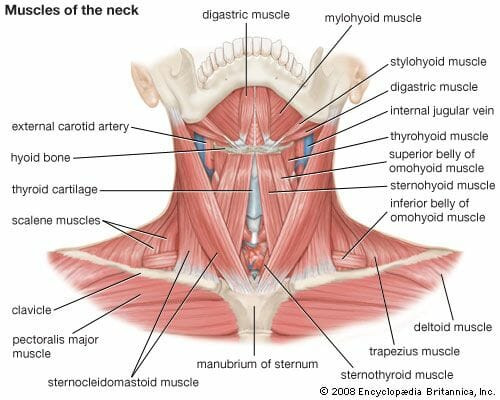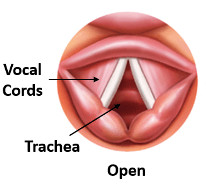How To Not Sound Strained When Singing? Singing without strain is achievable! This guide, brought to you by streetsounds.net, dives deep into understanding and eliminating vocal strain, offering practical exercises and techniques to help you achieve a powerful and effortless singing voice. Discover the secrets to vocal freedom and unlock your true potential with this definitive guide.
1. Understanding Vocal Strain
What exactly is vocal strain, and why does it occur? Vocal strain happens when you push your voice beyond its comfortable limits, leading to tension and a less-than-ideal sound. It’s like overworking any other muscle in your body. Your voice may sound raspy, rough, or shrill to listeners. Vocal strain also impacts the quality and clarity of street sounds when recording live performances.
According to a study published in the Journal of Voice in 2023, vocal strain often arises from improper technique or overuse, affecting vocal cord health and performance quality.
1.1. The Mechanics of Vocal Strain
What’s happening inside your body when you experience vocal strain? The vocal cords are muscles, and when strained, they become tense. This tension interferes with their natural vibration and can lead to discomfort or even injury. Think of it as trying to lift a weight that’s too heavy – your muscles tighten and you risk hurting yourself.
1.2. External Muscle Involvement
Why do muscles outside the vocal cords contribute to strain? When your vocal cords alone can’t reach a note, other muscles in your neck and larynx jump in to help. These extrinsic muscles weren’t designed for singing, leading to a strained, low-quality sound.
 Diagram showing the muscles in the neck
Diagram showing the muscles in the neck
Alt text: Illustration of neck muscles highlighting those involved in singing and potential strain.
1.3. Identifying the Sound of Strain
What are the telltale signs of a strained voice? A strained voice often sounds forced, tight, or wobbly. You might notice a lack of resonance, difficulty holding notes, or a general feeling of discomfort when singing. Understanding these signs is the first step in addressing the issue.
2. Identifying Common Sources of Vocal Tension
Where does vocal tension typically originate? Vocal tension often stems from the tongue, larynx, and upper body. Addressing these areas can significantly reduce strain and improve vocal performance.
2.1. The Tongue’s Role in Vocal Strain
How does tongue position affect vocal strain? Singers often strain by using their tongue to reach notes, either pushing it forward for high notes or pulling it back for low notes. This adds unnecessary tension to the voice. The larynx, or voice box, tends to follow the tongue, leading to a squeezed or nasal sound.
2.2. Checking for Tongue Tension
How can you check for tongue tension and correct it?
- Place your thumb under your chin and swallow.
- Feel the digastric muscle pushing down – this controls the root of your tongue.
- Sing while keeping your thumb under your chin.
- Aim to sing without feeling any motion under your chin, indicating that your tongue is relaxed.
2.3. The Larynx and Its Impact
Why is the larynx so crucial in avoiding vocal strain? The larynx, or voice box, is a major source of vocal strain. Singers might strain their neck trying to push the larynx up for high notes, resulting in a thin, shrill sound. Others might push it down for low notes, leading to a dull, lifeless tone.
This issue is particularly relevant for female vocalists, highlighting the importance of mastering techniques that ensure relaxed larynx positioning for tension-free singing.
2.4. Relaxing the Larynx
How can you relax your larynx to improve your singing?
- Gently feel your voice box between your thumb and finger.
- Swallow and notice the upward movement of your voice box.
- Pretend to yawn and feel the downward movement.
- Sing a high note and add a “yawny” or “goofy” sound to relax the larynx.
This yawn technique is excellent for accessing higher notes without tension.
 A man holding his voice box between his thumb and first finger
A man holding his voice box between his thumb and first finger
Alt text: Vocalist demonstrating how to locate and check larynx movement for tension.
2.5. Upper Body Tension
How does upper body posture contribute to vocal strain? Tension in your chest, shoulders, and abdominal muscles can impede your vocal cords. Slouching, raised shoulders, and a clenched abdomen all contribute to vocal strain.
3. Top 10 Exercises to Sing Without Straining
Ready to eliminate vocal strain? These ten exercises, as featured on streetsounds.net, will help you ease tension and free your vocal cords, allowing you to sing with power and ease.
3.1. Maintain a Tall Posture
How does proper posture contribute to vocal health? Proper posture is essential for reducing strain and optimizing breath control. Align your feet, hips, and shoulders, stand up straight, and comfortably raise your chest. Imagine someone standing in front of you and look them straight in the eyes.
According to research at the University of Southern California Thornton School of Music, postural alignment directly influences airflow and resonance, crucial for efficient vocal production.
 African American man with a gold watch singing on stage with white smoke
African American man with a gold watch singing on stage with white smoke
Alt text: Performer on stage showcasing upright posture for optimal singing.
3.2. Sing From the Diaphragm
Why is diaphragmatic breathing essential for singers? Singing from the diaphragm provides the necessary power and support for volume without tension. Your diaphragm, located between your heart/lungs and stomach/kidneys, plays a crucial role in breathing for singing.
3.3. Breathing from Your Diaphragm
How can you ensure you’re breathing from your diaphragm correctly?
- Breathe with your belly, letting it move freely.
- Keep your shoulders neutral.
- Inhale, belly out.
- Exhale, belly in.
3.4. The Lip Trill Exercise
How does the lip trill help reduce vocal strain? The lip trill relaxes vocal tension and prevents you from pushing your vocal cords too hard. Blow air and let your lips flop together, imagining the vowel “uh” as you do it. Sing up and down a 1.5-octave scale from a comfortable bottom note without pushing your voice.
3.5. The “ng” Sound Exercise
Why is the “ng” sound effective for releasing tongue tension? The “ng” exercise reduces tongue tension by minimizing tongue movement. Say “rung,” hold the “ng” sound, and sing the 1.5-octave scale. Check for tongue pushing by placing your thumb below your chin.
3.6. The “Gee” Sound Exercise
How does the “Gee” sound exercise further address tongue tension? The “Gee” exercise, utilizing tongue movement, helps release tension. Say “gee” (as in “geese” without the “se”), place your thumb under your chin, and sing the 1.5-octave scale while keeping your tongue flat and relaxed.
 This image shows a singer with his hand on his chest
This image shows a singer with his hand on his chest
Alt text: Vocal coach instructing on proper chest and tongue posture while singing.
3.7. The “No” Sound Exercise
What is the purpose of the “No” exercise in vocal training? The “No” exercise helps reduce strain while maintaining a full sound, encouraging singing in a mixed voice. Use the octave-repeat scale (a triplet arpeggio going up, repeating the top note three times, and going back down) while making a sad or dramatic “No” sound.
3.8. The “Nuh” Sound Exercise
Why is the “Nuh” exercise a good alternative to “No”? The “Nuh” sound avoids tension caused by the “o” vowel. Sing “nuh” (like “nut” without the “t”) with sadness, using the octave-repeat scale to reduce strain in your mixed voice.
3.9. The “Mum” Sound Exercise
How does the “Mum” exercise help release laryngeal tension? The “Mum” exercise releases laryngeal tension by encouraging a relaxed larynx. Revisit the 1.5-octave scale, sing “Mum” (like the first syllable of “mother”), and pretend to yawn. This lowers the larynx, releasing built-up tension.
3.10. The Importance of Yawning
Why is yawning encouraged during the “Mum” exercise? When you yawn, your vocal cords open wide to let air into your lungs, releasing tension. Put two fingers on your larynx to check for movement, aiming to keep it still, balanced, and relaxed.
 The vocal folds open or unapproximated
The vocal folds open or unapproximated
Alt text: Anatomical visualization of open vocal cords for relaxed singing.
3.11. Narrow the Vowel
Why is narrowing vowels beneficial for high notes? Narrowing vowels eliminates tension when hitting high notes. Avoid spreading vowels too wide by replacing them with narrower ones. For example, “girl” becomes “gul.” Extend your lips slightly for cleaner, more focused vowels.
3.12. Imagine Yourself on Top of the Note
How can mental imagery improve vocal performance? Imagine yourself already on top of the note, rather than reaching for it. Anticipate the high note, picture yourself standing right on top of it, and just sing it without reaching.
4. Optimizing Your Vocal Health
Beyond exercises, what else contributes to a healthy singing voice? Consistent practice, rest, and proper technique are essential for maintaining a healthy singing voice and avoiding strain. Vocal health also influences the quality and authenticity of street sounds recorded for sampling.
4.1. Addressing Vocal Strain Recovery
Can vocal strain go away, and how can you facilitate recovery? Vocal strain is often temporary with proper rest and technique correction. Learn to identify signs of strain, such as neck tension and a thin tone, to correct them early.
4.2. Understanding Throat Singing
Is throat singing a healthy vocal technique? Throat singing, practiced in Central Asian cultures, is a real technique that produces multiple pitches simultaneously. However, it requires specialized training and is different from the techniques discussed here.
4.3. Avoiding Vocal Cracking
How can you prevent vocal cracking while singing? Proper technique helps you avoid vocal cracking, which typically occurs when moving between vocal registers under strain. These exercises develop the coordination to navigate your entire range smoothly.
4.4. The Role of Vocal Fatigue
What causes vocal fatigue, and how can you address it? Vocal fatigue often stems from the tension sources discussed earlier. Consistent practice helps develop healthy vocal habits. Many professionals recommend honey and warm water or herbal tea with ginger to soothe their throats.
5. Incorporating Street Sounds Into Vocal Performance
How can you integrate urban soundscapes into your singing? Incorporating street sounds into your vocal performance can add depth and authenticity, reflecting real-world experiences. However, it’s crucial to maintain vocal health while experimenting with these techniques.
5.1. Recording and Sampling Techniques
What are some professional methods for recording street sounds without adding vocal strain? Professional methods include using high-quality microphones and soundproofing techniques to capture clean audio. Mixing these sounds with vocals should be done carefully to prevent vocal fatigue.
5.2. Unique and Authentic Sounds
Why is it important to capture unique street sounds for your music? Capturing unique and authentic street sounds adds originality to your music, making it stand out. These sounds can provide inspiration and create a unique auditory experience for your listeners.
6. Finding Inspiration and Community at streetsounds.net
Looking for inspiration and a community of fellow sound enthusiasts? Visit streetsounds.net to explore a vast library of high-quality street sounds, insightful articles, and a thriving community of musicians, filmmakers, and sound artists.
6.1. Exploring the Sound Library
What resources are available at streetsounds.net? streetsounds.net offers a rich library of diverse and high-quality street sound effects, providing inspiration and resources for your creative projects. Discover the sounds of New York City and beyond.
6.2. Connecting with Sound Enthusiasts
How can you connect with like-minded individuals on streetsounds.net? Join the streetsounds.net community to connect with fellow sound enthusiasts, share your work, and collaborate on exciting projects.
7. Real-World Applications of Streetsounds.net
How are professionals using street sounds in their projects? Filmmakers use authentic city sounds to enhance realism. Musicians incorporate urban textures into their compositions. Game designers create immersive environments with detailed soundscapes.
7.1. Streetsounds.net in Film
How does streetsounds.net contribute to the film industry? Filmmakers rely on streetsounds.net for realistic urban sounds that enhance the immersive quality of their films.
7.2. Streetsounds.net in Music
How does streetsounds.net support musicians and producers? Musicians and producers find inspiration and unique sound elements at streetsounds.net to create innovative and authentic tracks.
7.3. Streetsounds.net in Gaming
How does streetsounds.net enhance the gaming experience? Game designers use streetsounds.net to create realistic and immersive urban environments that draw players into the game.
8. Expert Interviews and Stories
Learn from the pros! streetsounds.net features interviews with artists and experts who share their experiences and insights on working with street sounds, offering valuable perspectives and inspiration.
8.1. Vocal Techniques for Street Performances
What vocal techniques are essential for street performers? Street performers often require specific vocal techniques to project their voices effectively without straining, especially in noisy environments.
8.2. Blending Vocals and Urban Sounds
How can vocalists blend their voice with urban soundscapes? Vocalists can use techniques such as call-and-response with street sounds or create harmonies that complement the existing soundscape.
9. streetsounds.net and the Future of Sound Design
streetsounds.net is at the forefront of sound design innovation, providing cutting-edge resources and fostering a community of creative professionals.
9.1. Trends in Urban Soundscapes
What are the emerging trends in urban soundscapes and their impact on music? Emerging trends include the fusion of natural and artificial sounds and the use of sound to create interactive and immersive experiences.
9.2. Preserving Sound Heritage
How does streetsounds.net contribute to preserving urban sound heritage? streetsounds.net plays a crucial role in archiving and preserving urban soundscapes, ensuring that these unique auditory environments are remembered and appreciated for generations to come.
10. Take Action and Transform Your Voice
Ready to take your singing to the next level? Visit streetsounds.net today to explore our extensive sound library, read insightful articles, and connect with a vibrant community of sound enthusiasts. Unlock your vocal potential and discover the power of sound.
Address: 726 Broadway, New York, NY 10003, United States
Phone: +1 (212) 998-8550
Website: streetsounds.net
If you’re looking for comprehensive guidance on vocal technique, consider exploring streetsounds.net’s masterclass. For a deeper dive, check out our detailed article on vocal exercises.
Ultimately, remember, achieving the ability to sing without straining is a journey that combines proper technique, mindful practice, and a deep appreciation for the sounds around us. With streetsounds.net, you have the tools and community to make that journey a success.
